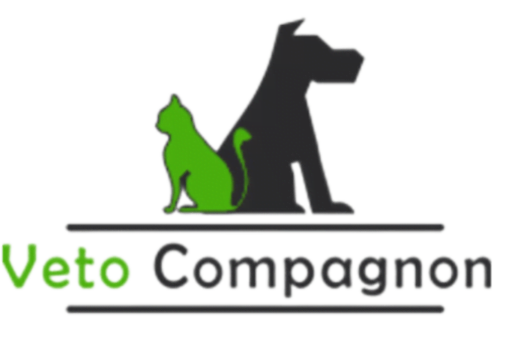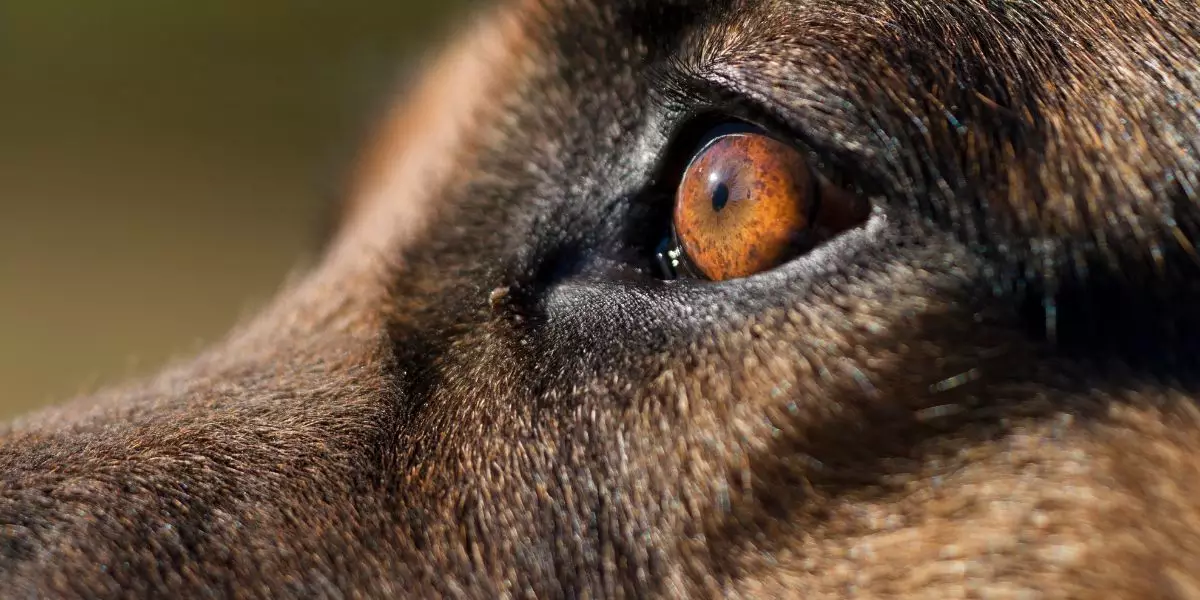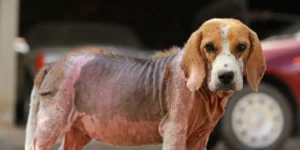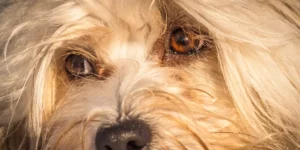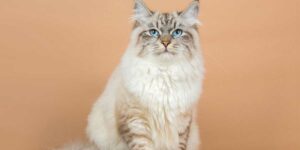The eye health of our four-legged companions is an essential aspect of their overall well-being, and a better understanding of the eye disorders they may encounter can help us take care of them more effectively.
In this article, we focus on cataract. Our goal is to inform you about cataracts in dogs and cats, addressing their causes, symptoms, and ways to treat them. By being well informed, we can better detect signs of this condition and take appropriate measures to protect and improve the eye health of our animals.
Understand cat dog cataract
Definition of cataract
The cataract is a Eye disease showing crystalline progressive opacification, the transparent lens inside the eye. The function of the lens is to focus light on the retina, allowing the formation of clear images. When the lens becomes opaque, the light can no longer pass through it correctly, resulting in blurred vision, or even the blindness in the most serious cases.
Cataracts in dogs and cats may affect one eye (unilateral cataract) or both eyes (bilateral cataract). In some animals, it will develop in a few months, in others in several years. Cataracts may also be partial or total, depending on the area and extent of crystalline opacification.
Cataract should not be confused with crystalline senescence, a natural aging process which also leads to an opacification of the lens but which occurs in a slower and uniform way. The senescence of the lens may cause a decrease in vision, but it usually does not lead to blindness and is less serious than cataract.
Causes of cataract in dogs and cats
Now that you know what cataract is, you probably have to ask yourself what causes this eye condition? Well, know that there are several factors that can justify its appearance. Among them are:
Age : As in humans, age is a risk factor for cataract development in dogs and cats. As the crystalline tissue ages, changes will gradually lead to opacification. Age-related cataracts are more common in dogs than in cats.
Genetic factor : Some breeds of dogs and cats are more likely to develop cataracts due to genetic predisposition. For example, Cocker Spaniels, the Poodles, the Golden Retrievers and Labrador are among the most affected dog breeds. In cats, Persians and Himalayans appear to be more exposed
The underlying diseases : Some diseases or health disorders will tend to increase the risk of developing cataracts in pets. For example, ldiabetes is one of the main causes of cataracts in dogs and cats. However, it is not alone; other diseases such as eye infections, inflammation, trauma or metabolic problems can cause cataracts.
Symptoms of cataract in dogs and cats
Cataracts in dogs and cats can occur in different ways, depending on their stage of development and their location in the eye. But then, what are the symptoms of cataract for our four-legged companions?
Opacification of the lens : One of the most visible signs of cataract is the appearance of a whitish or greyish opacity in the eye lens. This opacity may be difficult to detect at first, but it will become increasingly visible as cataract progresses.
Difficult to see in low light conditions : Cataract animals experience difficult to see in poor lighting conditions. They are more hesitant when they move in dark or poorly lit areas, they stumble on objects or hit on furniture. They find it hard to spot toys or food on the floor.
Modified animal behaviour : It is not uncommon to observe changes in the behaviour of cataract dogs or cats. Because their vision is diminished, some animals will become shyer, anxious or irritable, especially if they can no longer recognize their environment or the people around them. They may also be less likely to play or explore and spend more time sleeping or resting.
Natural treatments for cataracts for dogs and cats
There are natural treatments to slow cataract progression and improve eye health in dogs and cats. However, these natural remedies cannot fully cure cataracts, especially if they are advanced. Indeed, these treatments are primarily there to support vision and slow the aging of the retina.
In the case of advanced cataracts, the surgery remains the best option for restore vision animal. However, if you wish to support your animal's vision and avoid contracting a cataract, you should know:
Antioxidants
The antioxidants play a crucial role in the eye protection against oxidative damage and will help prevent or slow cataract development. Antioxidants include:
- Lutein and zeaxanthin : These two antioxidants are naturally present in the retina and crystalline. They help protect the eyes from damage caused by ultraviolet rays and free radicals. They are present in green leafy vegetables, eggs, red fruits and squash.
- Vitamin C and Vitamin E : These antioxidant vitamins help protect eye cells from oxidative damage. They are found in citrus fruits, berries, green vegetables and nuts.
- Flavonoids : They help protect the eyes from damage caused by free radicals. They come from red fruits, coloured vegetables and green tea.
Plants as a natural remedy
Some plants have beneficial effects on eye health and can help slow cataract progression.
- The gingko biloba : This plant helps improve blood circulation and protect eye cells from oxidative damage.
- The blueberry : Rich in anthocyanins, a type of flavonoid, the blueberry helps strengthen the capillaries and improve the blood circulation in the eyes.
- The blackcurrant : Containing antioxidants, vitamins, minerals and anthocyanins, the blackcurrant helps protect the eyes from oxidative damage and prevents certain eye diseases, including cataracts.
Food and health
Make sure that your animal's diet contains all the essential nutrients, including vitamins, minerals and antioxidants needed to maintain good eye health. Favour natural foods, rich in antioxidants and nutrients, and avoid processed foods rich in preservatives.
Make sure your animal keeps an appropriate weight by providing it with a balanced diet and regularly encouraging exercise. An overweight dog will tend to get diabetes more easily, cataract factor.
Try limit your animal's exposure to UV rays avoiding letting him out during the sunniest hours of the day and providing him with shaded areas to rest.
Finally, you can also opt for dietary supplements to strengthen vision.
At Veto Compagnon, we specially designed a COMPLEX VISION REINFORCED, based on gingko biloba, blueberry, blackcurrant, vitamin C, Luteine and Zeaxanthine to support the eye health of your dog or cat.
Our product works! This is evidenced by our customers who have already ordered from us:
« My dog's cataract does not evolve » Amazon opinion
« This product is very effective on my bitch » Amazon opinion
« I've been using it for several months to stop my dog's cataract » Opinion Veto Companion
To conclude on cataracts of dogs and cats
In conclusion, cataract is a common eye condition in dogs and cats, which can lead to a deterioration of vision and a reduction in the quality of life of the animal. Understanding the causes, symptoms and risk factors associated with cataracts is essential to prevent and manage this disease.
Although natural treatments cannot fully cure cataracts, they can help slow its progression and support your animal's overall eye health. The use of antioxidants, herbal remedies, a balanced diet and a healthy lifestyle will help improve the eye health of your dog or cat.

